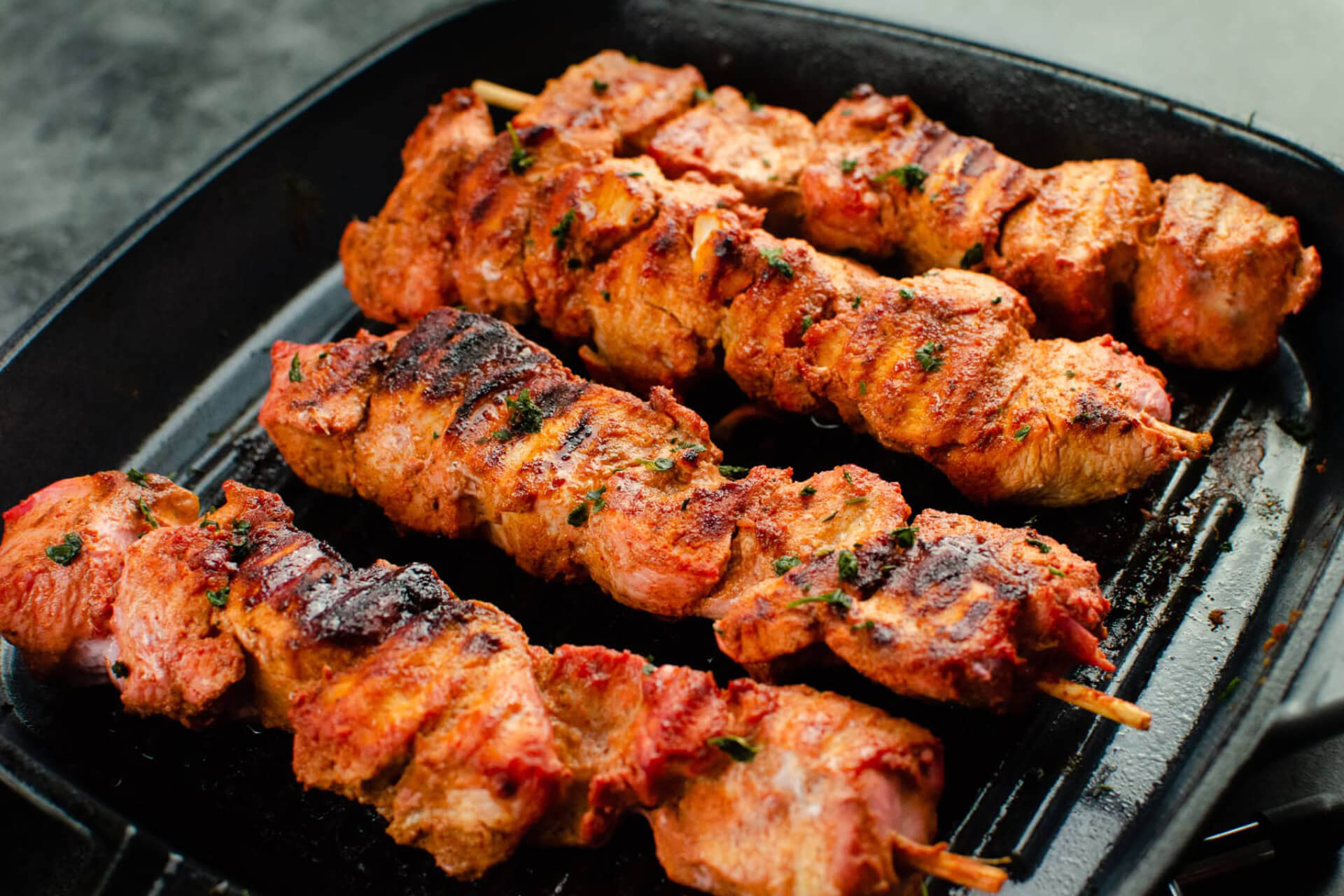A Culinary Journey Through Azerbaijan

A Culinary Journey Through Azerbaijan
Azerbaijani cuisine is remarkably diverse, offering a rich blend of dairy, meat, flour-based, vegetable, and herb-infused dishes. Shaped by the country's mountainous terrain and subtropical climate, the culinary traditions incorporate fresh local ingredients such as lamb, poultry, Caspian fish, seasonal fruits, and aromatic herbs. The cuisine reflects a harmony between geographical abundance and centuries-old cultural values.
🥩 Meat in Azerbaijani Cuisine
Charcoal-grilled meats and tandir-cooked specialties are widely favored across the country. Restaurants serving traditional food often highlight dishes like kebabs and roasted meats, with lamb being the most commonly used meat. Beef and poultry are also part of the cuisine, but to a lesser extent. The methods used for marination and slow cooking impart a depth of flavor unmatched by many other cuisines.
🥗 Vegetables & Fruits
Fresh vegetables including eggplants, tomatoes, cucumbers, and greens are staples in everyday meals. Fruits like apples, quince, plums, and citrus varieties add natural sweetness or tartness to both savory and sweet dishes. These ingredients not only provide flavor but also reflect Azerbaijan’s agricultural richness.
🌿 Spices and Herbs
A defining element of Azerbaijani cuisine is the generous use of spices and herbs, which elevate both the aroma and taste of dishes. Among the most used are coriander, basil, mint, sumac, tarragon, dill, cinnamon, cloves, and cumin. Sumac, in particular, is a common condiment for meat-based meals.
🍲 Signature Azerbaijani Dishes
🥣 Piti
Piti is a traditional lamb soup slow-cooked in individual clay pots. Originating from Sheki, this rich and hearty dish combines lamb, chickpeas, and spices for a comforting, flavorful meal. It’s a ritual dish often enjoyed in two stages - broth first, then the solid parts mashed with bread.
🔥 Saj
Saj is both the name of the dish and the cast-iron pan it is prepared in. A sizzling mix of meats and vegetables, saj is typically served on a mini brazier that keeps the dish hot and continues to cook it at the table. It’s one of the most interactive and warming dishes in Azerbaijani dining.
🌿 Dolma
Dolma is a cornerstone of the national cuisine, featuring grape leaves, eggplants, peppers, cabbage, or even apples stuffed with a savory mix of minced meat, rice, and herbs. Each region puts its unique spin on this beloved comfort food.
🍚 Pilaf (Plov)
Pilaf in Azerbaijan is a deeply ceremonial dish. There are numerous variations, including ones with lamb, dried fruits, chestnuts, saffron, and more. It’s traditionally steamed with great care and served during celebrations or gatherings, always accompanied by specific side dishes and sauces.
🐟 Lavangi
Lavangi is a specialty from southern Azerbaijan, especially Lankaran and Masalli, made by stuffing fish or poultry with a mixture of crushed walnuts, onions, and spices before roasting. The flavor is deeply savory, slightly sweet, and incredibly satisfying.
🍢 Kebab Varieties
Kebab is the go-to barbecue dish in Azerbaijan. Variants include:
-
Tika-Kebab – chunks of marinated lamb
-
Lyulya-Kebab – minced lamb grilled on skewers
-
Khan-Kebab – liver wrapped in sheep fat
Poultry, fish (especially sturgeon), and even vegetables like tomatoes and eggplants are also turned into flavorful kebabs. These are often served with Narsharab, a tangy pomegranate sauce.
🍬 Sweet Treats & Desserts
Azerbaijan offers a wide selection of desserts such as:
-
Shekerbura (crescent-shaped pastries with nuts)
-
Baklava
-
Kurabiye, Mutaki, and more
The city of Sheki is particularly famous for its sweets like Sheki Baklava, Peshvenk, and Girmabadam, often made with rice flour, nuts, and aromatic spices.
Fun Culinary Fact
In March 2009, bakers in Ganja created a baklava measuring 12 meters long and 4 meters wide, weighing around 3 tons, for Novruz celebrations. It was listed in the CIS Book of Records and has been submitted for inclusion in the Guinness World Records.





Please make sure your contact details, email, country code & number is correct